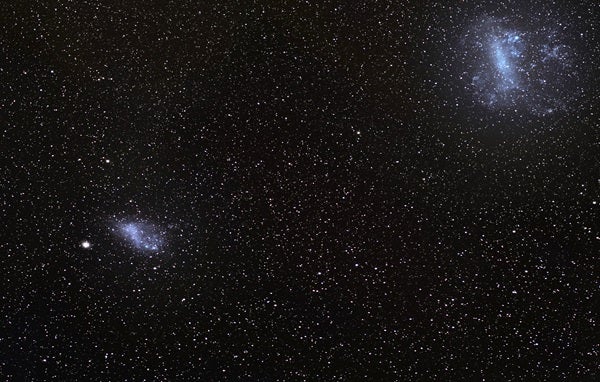To map the Magellanic Clouds, many studies have used variable stars, namely Cepheid and RR Lyrae variables, to determine the distances to these stars within the LMC and SMC quite accurately. These variable stars are such accurate distance indicators because they display a clear correlation between their pulsation periods and their intrinsic brightnesses. By measuring a star’s light curve and determining the period of time over which it varies, astronomers can calculate the star’s intrinsic brightness and compare it to observations. Any dimming of the star with respect to the brightness we expect to see is thus related to the star’s distance.
Over time, increasing the catalogs of these variables and others within the Magellanic Clouds has begun to reveal their 3-D structure. From these measurements, astronomers have already determined that the SMC is highly elongated along our line of sight, stretching away from us with a length between 32,600 and 65,200 light-years. Overall, the SMC’s shape can be described as an “extended ellipsoid,” while the LMC appears to have a central bar structure and at least one spiral arm.
Associate Editor










